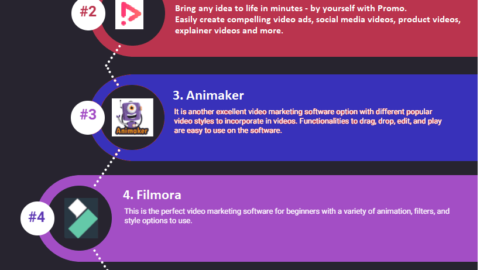5 New Principles Insurance Providers Must Learn for the Present Age
Today, virtually all insurance companies use some kind of digital platform for hosting and accessing data. However, continuous market and tech developments and the emergence of new challenges mean that these platforms need to be updated regularly. System upgrades involve more than just investment in new technologies, however. These also require the understanding of new concepts that affect the insurance business today by the insurance providers. Insurance companies interested in updating their systems should check that their chosen digital insurance platform accounts for the new principles and concepts below.
Table of Contents
1.) Big Data

“Big Data” is a catch-all term that refers to extremely large data sets that require cutting-edge systems and databases to capture and process effectively. The amount of information for something to be Big Data is not static. This is because available computing power and data set sizes are growing at exponential rates.
This means that if an organization had invested in a modern system for managing extremely large data sets 5 years ago, chances are that system would struggle to deliver today. After a decade, such systems may become completely outdated.
Insurance companies pioneered the processing of very large data sets for risk management. Data sets today have become far too large for traditional manual processes or earlier generation computer systems to handle effectively. Given this, insurance providers should understand that periodic updates to digital insurance platforms are needed to handle constantly expanding data requirements. If no upgrades have been made in several years, it might be worthwhile to consider an update.
2.) The Internet of Things

The Internet of Things (IoT) is an idea that’s inseparable from Big Data, especially now that an unprecedented number of people are constantly connected to the internet. Either through their phones, smart appliances, or wearable devices. It’s worth mentioning that insurance companies were among the pioneers of the use of internet-connected wearables for gathering information on vital signs and other factors that could influence their policyholders’ relative risks.
The adoption of wearables has surged in recent years. And the constant data streams that these and other internet-connected machines produce will only continue to grow. Thus, to gain a better appreciation of risks and market direction, insurance providers have to help employees and other stakeholders understand the IoT. And moving away from the concept of the internet as a network of phones and computers. Additionally, any adopted digital insurance platform needs to operate effectively under the current IoT framework.
Note that we are already living in a cyber society, so it is not enough to defend against cyber threats. Having cyber risk insurance policy helps you to cover the financial losses that may result from cyber incidents.
3.) User-Enabled Product Personalization

In conventional insurance systems, every product offer has to be ready by the insurer’s IT team before it could be on the market. While this used to work well, it’s clear that insurance customers today are much more interested in policies that precisely match their needs offered by insurance providers. Thus, the difficulty of modifying policies makes it difficult for some insurers to be competitive.
A current trend in insurance systems today is to offer policy administrators, agents, and customers more control over product customization. In newer systems, agents and policyholders can modify insurance products. And they make changes without going through circuitous processes involving the insurer’s IT department. This not only reduces the IT team’s workload but also ensures reduced turnover and better client retention.
4.) SaaS and Cloud Hosting

Though Software as a Service (SaaS) and cloud hosting aren’t exactly new, they are now fully mature technologies, offering flexibility, service levels, and reliability that most on-premise systems cannot match without major investments.
Using an SaaS solution removes the need for insurance companies to maintain large offices, substantial IT teams, and expensive server hardware, bringing down overhead costs substantially. These systems are also updated regularly by the service provider according to service level agreements. So they are ensuring that the users will never experience long outages, run out of capacity. Or fail regulatory compliance standards.
5.) Machine Learning and Artificial Intelligence for Insurance Providers

Most insurance businesses today already use extensive automation to reduce labor requirements, improve data accuracy, and minimize manual data wrangling. Most of this standard automation involves making data immediately available in different areas of a system without human input. This allows users to focus on important value-adding activities rather than on data management.
This basic automation can be taken to the next level through new developments in artificial intelligence and machine learning technology for insurance providers. Current generations of insurance software use AI and advanced machine learning algorithms to not only automate where data goes. But also provide analysts and other knowledge workers with new insights into what this data means. These advancements could also be useful to seamlessly deliver a more personalized experience for policyholders based on their previous interactions.
Another obvious use of modern artificial intelligence in insurance is to detect fraud and minimize its effects. In the US alone, insurance fraud costs regular Americans USD 40 billion a year, amounting to about USD 700 per household annually. Being able to minimize this kind of criminal activity can pave the way for more affordable policies. That can be reaching to a bigger pool of insurance customers.
It’s Time to Update Your Digital Insurance Platform for Insurance Providers
While insurers remain at the cutting edge of data management, capitalizing on new market opportunities and avoiding potential threats will require novel technologies and a better understanding of the role data plays in modern life. By keeping digital platforms up-to-date, insurers can do a better job of mitigating risks for policyholders and other stakeholders.

11+ years strategic communications, marketing, and project management experience. I am a trainer at StarWood Training Institute, focusing on online courses for project management professionals.










